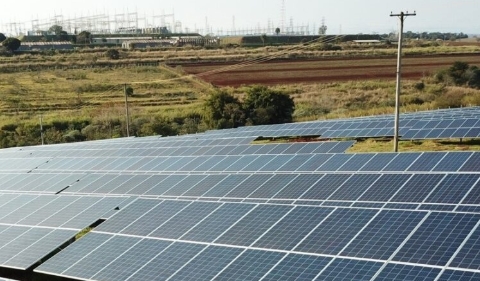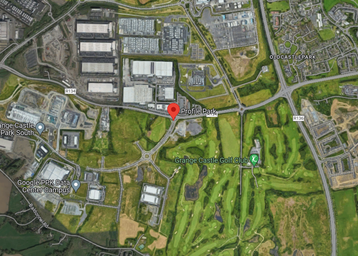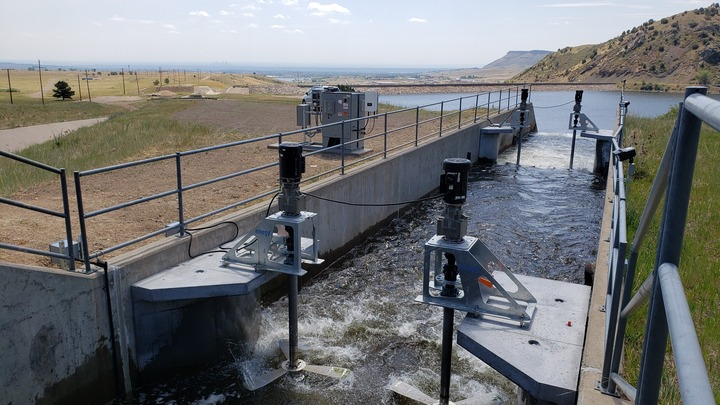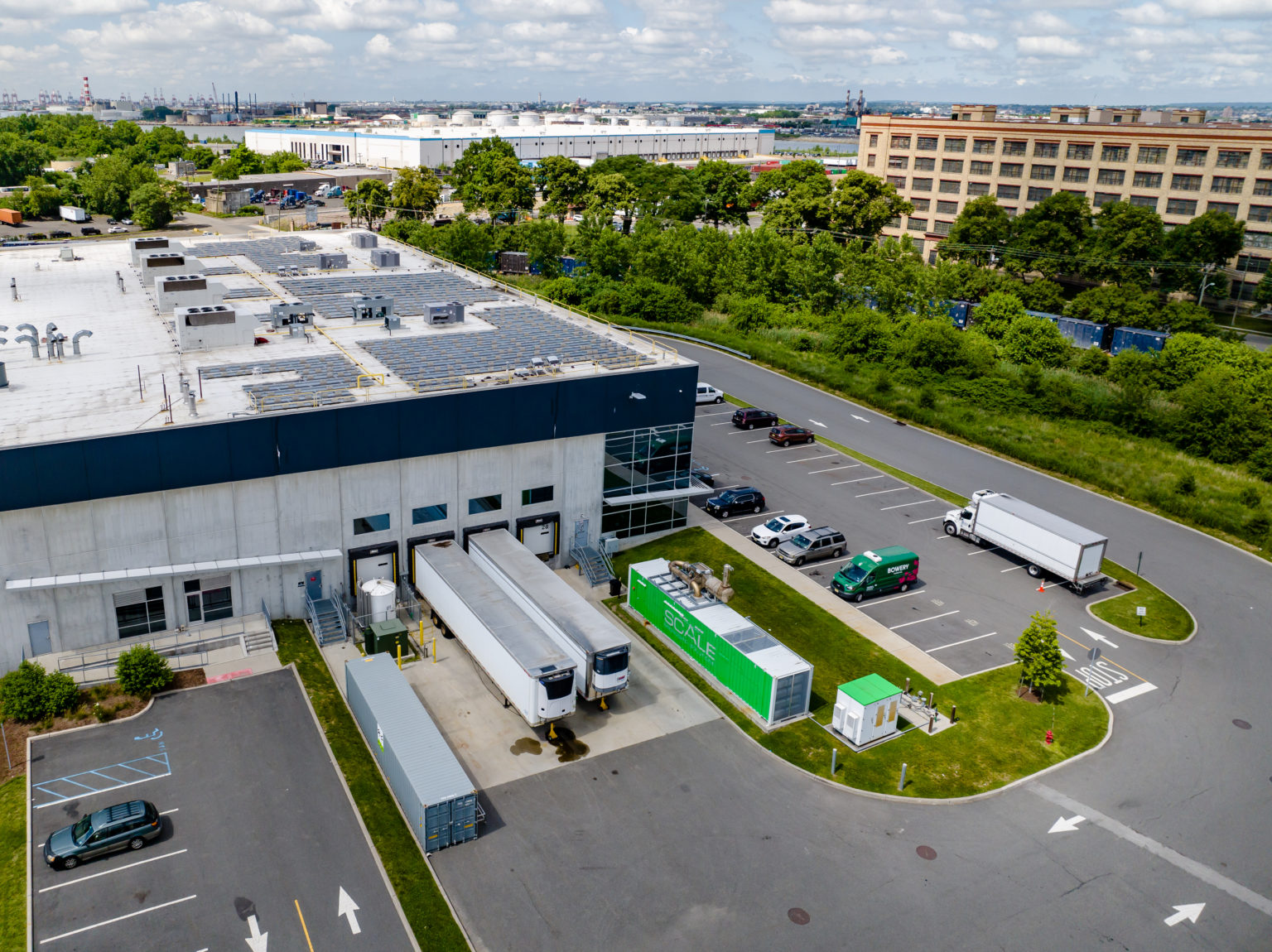Heading into 2020, the energy services provider Veolia is managing a pipeline of microgrid projects valued at more than $1 billion. "Our pipeline is predominantly commercial and industrial opportunities, with a small component of federal work," said Jack Griffin, vice president at Veolia North America.
In the year ahead, Veolia expects to take on more commercial and industrial (C&I) projects, such as the 14-megawatt combined heat and power microgrid that it developed at New York’s Hudson Yards, he said.
Navigant Research, a Guidehouse company, in 2018 predicted that the global market for microgrids would reach almost $31 billion by 2027, with the most rapid growth coming from C&I installations.
Because the pool of invested capital in the microgrid-plus-storage space is so varied, it is unlikely that any single solution will emerge as a clear victor in the near future. In the long run, however, the expectation is that the most sustainable microgrid technologies will gain the upper hand, said Jon Yoder, managing director and head of Goldman Sachs Asset Management’s Renewable Power Group in New York.
"The two largest changes that can accelerate microgrid deployments are availability of financing and streamlined regulatory approval with the utilities," said Angelo Campus, founder and CEO of BoxPower, a company that makes turnkey solar power and battery units that can fit into a shipping container.
Boutique lenders, such as Constant Energy Capital, are already financing residential and commercial microgrid systems, and the expectation is the development of solar-lease type financing options in the microgrid space will have a big impact on deployment in the coming years.
Veolia’s Hudson Yards project lets companies contract how they want to ride through an outage, and it lets companies sell power back to the grid. "The Hudson Yards model values the resiliency component of [a microgrid’s] islanding capability. This isn't an energy efficiency offer but a reliability and resiliency one," Griffin said.
This model also makes sense going forward because ride-through capability is important to some entities and less important for others, he said.
A microgrid is a local energy grid that can disconnect from the traditional power grid and operate autonomously. A microgrid generally operates while connected to the grid, but it also can create an island of power and operate on its own in times of crisis or during power outages. Microgrids can be powered by distributed generators, batteries and/or renewable resources such as solar panels. Depending on how it’s fueled and how its requirements are managed, a microgrid might run indefinitely. Currently, in the United States, about 75 percent of new microgrids have battery storage, according to Navigant Research.
The persuasive power of California wildfires
For many companies, the California utilities’ recent preemptive public safety power shutoff (PSPS) events — aimed at preventing wildfires from being started by electrical equipment during the state’s dry wind season — drove home the message that real money is on the line. "They know how much outages cost them due to the costs attached to the lost productivity and sales when the grid is down," said Peter Asmus, a research director at Navigant.
It was a wake-up call that the power could be out for days. "It also reminded people that there could be any number of reasons for outages beyond the control of the utility, including earthquakes or acts of malice, like physical or cyberattacks on the grid. A modest effort on preparedness will go a long way if and when a prolonged outage happens," added Alexandra "Sascha" von Meier, an adjunct professor of electrical engineering and computer science at the University of California, Berkeley, and a director in the California Institute for Energy and Environment’s electric grid program.
Since the PSPS events, queries about microgrids from C&I accounts have surged. "So far, we've seen a 30 to 50 percent increase in monthly revenue since the [PSPS] outages … And we expect to continue to see an increase over the coming months as next year’s PSPS season gets closer," BoxPower’s Campus said.
A new risk paradigm
As California’s recent wildfire season showed, companies are already dealing with the consequences of climate change. Industrial companies, which often rely heavily on energy use, heavy equipment and manual labor, are particularly vulnerable to power disruptions.
"It’s essential for companies to build resilience to minimize their financial losses as climate change impacts gets worse," said Emilie Mazzacurati, founder and CEO of Four Twenty Seven, the Berkeley, California-based research firm that prices climate risk. Credit ratings agency Moody’s bought a controlling stake in Four Twenty Seven in July.
Preparing for climate change goes beyond traditional risk management, because the past is no longer an accurate predictor of the future. "Companies cannot base future preparedness measures on the frequency and severity of past events," Mazzacurati said.
In addition to understanding their forward-looking risk exposure to climate hazards at key facilities, companies need to be prepared for events that happen in quick succession as well as overlapping events, she said.
According to Four Twenty Seven’s data, about 47 percent of industrial companies with U.S. headquarters have a high-risk exposure to heat stress and about 10 percent have medium risk or higher for hurricanes and typhoons.
"Based on our experience, many companies are still looking at climate change from a traditional risk management perspective," Mazzacurati said.
While there continues to be a need for that, there is also a need for this approach to incorporate a systematic, forward-looking climate risk assessment and more resilience planning, she said. Four Twenty Seven does not factor into its climate risk assessments whether a company takes resilience measures such as deploying microgrids.
Grid locked
When it comes to deploying microgrids, the bottlenecks are often the utility interconnection and the building permits. Also, the technologies wrapped into microgrids are advancing faster than the regulation, Asmus said.
"We need to be able to connect microgrids more quickly, and the utilities and planning departments need to provide permits quicker," said Vipul Gore, president and CEO of Gridscape Solutions.
The time that it takes to connect to the grid is already on the way down. In 2017, it might have taken 10 months to connect to the grid, and in 2019, it was about six to eight months, he said. Getting permits currently takes about two to three months. Gore believes that both could compress to about two to three weeks.
The United States has the least reliable power grid of any industrialized nation, according to industry experts, and it is continuously facing extreme weather events such as wildfires and hurricanes. It also uses technology from the 1950s in many parts of the county, said Asmus, who focuses on emerging energy distribution networks models for Navigant.
Ultimately, modernization of the U.S. power grid will require planning, customer focus and enabling technology. "Microgrids are just one tool," said Jared Leader, manager of industry strategy at the Smart Electric Power Alliance, a non-profit that is working to facilitate the electric power industry’s transition to a carbon-free energy system by 2050. Microgrids, distributed energy resource management systems, virtual power plants and non-wire alternatives are all enabling technologies will facilitate grid modernization.
A decade ago, many utilities generally viewed microgrids as a threat. Now, progressive ones, such as Duke Energy, are experimenting with them as a demand response energy resource and as a resource that is capable of providing other services to the larger grid.
States of change
When it comes to commercial and industrial settings, the main reasons to deploy a microgrid are energy security, resiliency and energy cost savings, said Takehiro Kawahara, senior associate at Bloomberg NEF, adding that the environmental benefits, although important, are often secondary.
Because technologies are still emerging and the need to act is heightened by climate change-related risks, some C&I companies are entering into energy-as-a-service arrangements that are structured as leases and in which the management of the microgrid is outsourced to a third-party service provider. Others are turning to 100 percent renewable microgrid solutions or renewable microgrids that rely on natural gas as a backup source of power. Natural gas has its downsides, but it is a step in the right direction because it is a step away from diesel, according to industry officials.
The major advantage of using natural gas as a backup source of power is that it can cover long-duration outages with a much smaller footprint and at a lower price than diesel, said Allan Schurr, chief commercial officer at Enchanted Rock, a provider of long duration natural gas backup power systems. When organizations use renewable microgrids that rely on natural gas as a backup source of power, emissions only occur during grid outages.
Natural gas offers a 20 percent improvement on greenhouse gas emissions (GHG) emissions during outages when compared to diesel, and this can help companies achieve their sustainability goals and comply with tighter state rules and regulations around emissions, Schurr said.
Even though the United States is withdrawing from the 2015 Paris Agreement, 25 governors have pledged to uphold the commitments laid out in the global pact.
Sustainable storage
An examination of the mixed electrical energy storage future in the United States would not be complete without mentioning steel flywheel energy storage technology. Steel flywheel technology does not rely on rare metals mined outside the United States, and it is fully recyclable, according to industry insiders.
Over 99 percent of the product is made of steel, which lasts for 20 years and can be recycled to produce a new flywheel, said Ed Chiao, CEO and co-founder of Amber Kinetics. His firm’s flywheels store electrical energy in a large spinning steel rotor. Essentially, the faster the rotor spins, the more energy it stores. A motor-generator is used to charge (accelerate) and discharge (decelerate) the steel rotor. Flywheels can be powered by any type of generation: solar; wind; diesel; and so on.
"Our solution has an installed cost that is comparable with lithium batteries," Chiao said. "Over the life of the asset, the economics of flywheels win because our technology can be cycled 10,000 plus times with zero degradation and zero replacement. Not only is the technology more sustainable and better for the environment, it is also better for customers' bottom line."
According to Chiao, steel flywheel technology is a natural fit for microgrids in remote locations because it can operate with low maintenance and it can withstand extreme environmental conditions.
"While our solution can absolutely be installed in dense and urban areas, in cities the cost of real estate becomes a real factor, and our economics are better where there is more space available for solar plus storage," he said.







